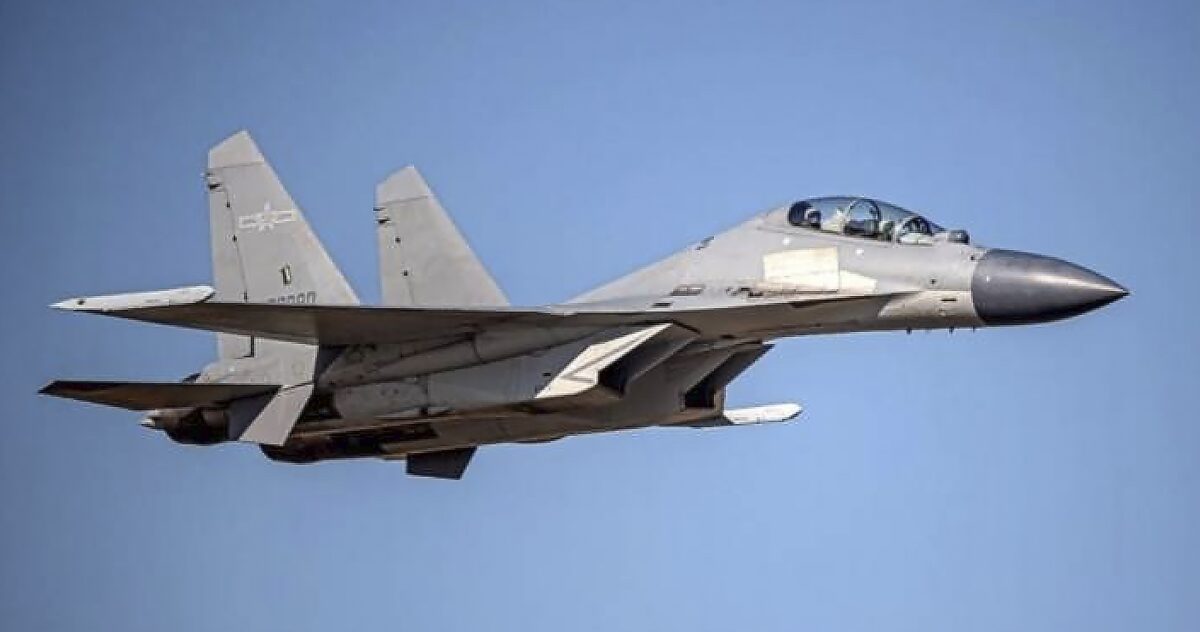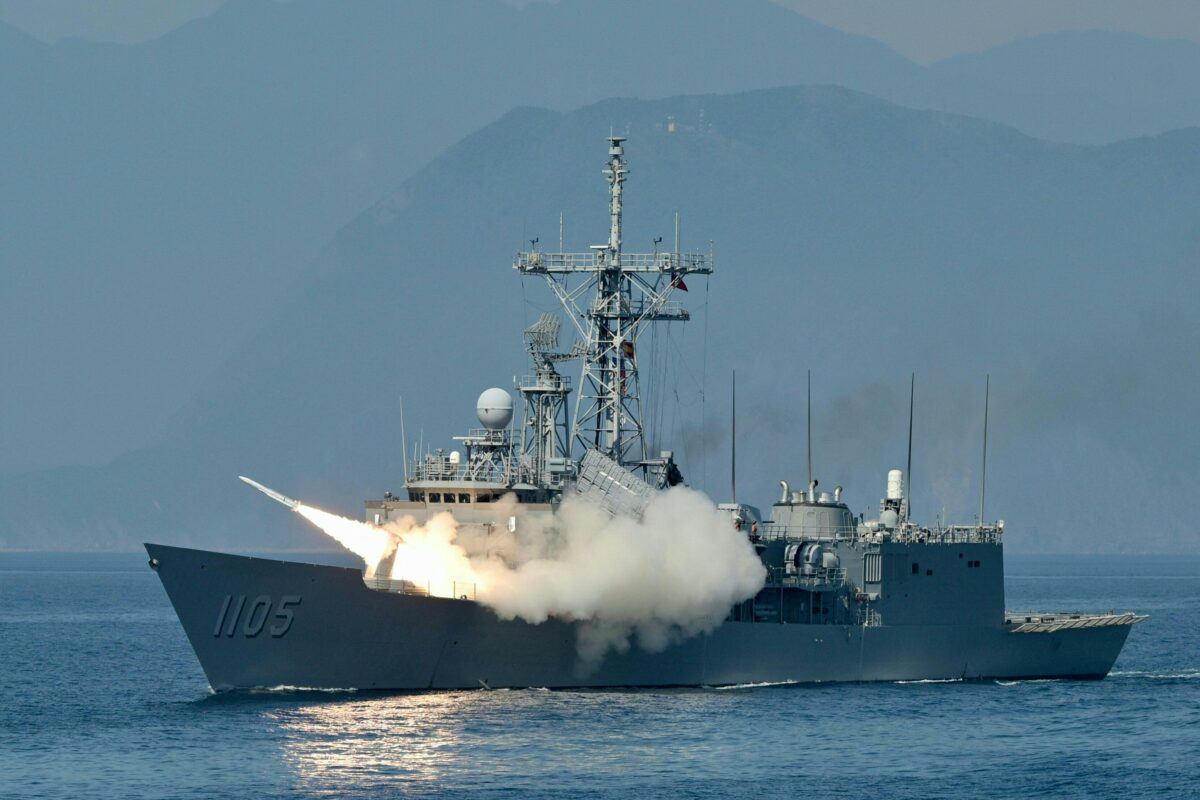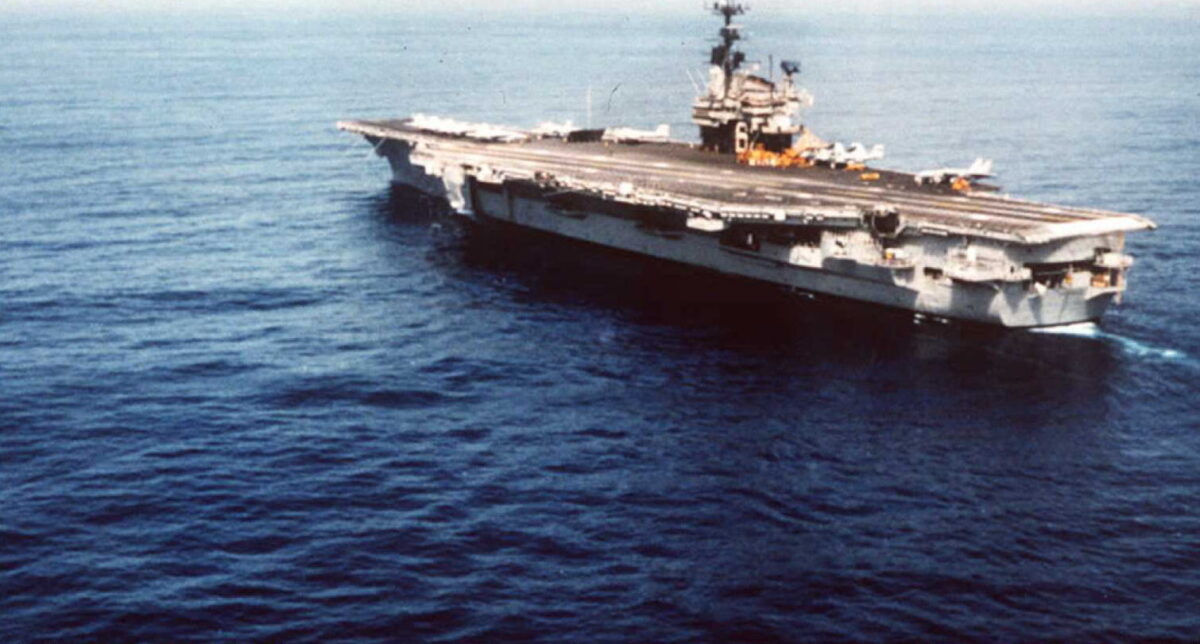Deterring the CCP’s Plans to Take Over Taiwan
CommentaryThis article provides some concrete suggestions to enhance Taiwan’s deterrence capabilities against the Chinese Communist Party’s (CCP) plans. The author hopes the Taiwanese government reviews these recommendations for immediate consideration and future planning. Military Deterrence What is military deterrence? According to U.S. Joint Publication 3.0 Joint Operations, deterrence “prevents adversary action through the presentation of a credible threat of unacceptable counteraction and belief that the cost of the action outweighs the perceived benefits.” Deterrence, according to Air Force Doctrine, consists of three elements: capability, credibility, and communication. “Capability consists of having the means to influence behavior. “Credibility consists of maintaining a level of believability that the proposed actions may actually be employed. Credibility depends on the appearance of the deterrent from the adversary’s point of view. For effective deterrence, credibility hinges on having a convincing capability to execute a variety of … options and a willingness to employ these options. “Communication consists of transmitting the intended message to the desired audience. For effective deterrence, this messaging should articulate … [a country’s] resolve to employ capabilities that deny the benefits of adversary action and impose costs on them.” For example, country A attempts to deter country B by clearly communicating that country A has the capability and credibility to make the probability of country B’s military success low and the costs of attack high. This message also must be comprehended by country B’s leadership. The United Kingdom’s Joint Doctrine of deterrence also uses a similar concept of capability, credibility, communication, and comprehension (understanding). Military Risk to Taiwan Ian Easton (from Project 2049 Institute) and other analysts argue that the People’s Liberation Army (PLA) has several military plans to force the Republic of China (ROC, Taiwan’s official name) to become part of communist China. In the most recently passed National Defense Authorization Act (NDAA) for the fiscal year 2023, the U.S. Congress and President Joe Biden want to support the ROC armed forces by focusing their efforts on delaying, degrading, and denying PLA attempts to: “(a) to conduct coercive or grey zone activities; (b) to blockade Taiwan; or (c) to secure a lodgment on any islands administered by Taiwan and expand or otherwise use such lodgment to seize control of a population center or other key territory in Taiwan; and (d) to prevent the People’s Republic of China from decapitating, seizing control of, or otherwise neutralizing or rendering ineffective Taiwan’s civilian and defense leadership.” I assume the most likely PLA course of action (COA) is a blockade (coercive quarantine). The most dangerous COA is an invasion. A Chinese PLA J-16 fighter jet flies in an undisclosed location in a file photo. (Taiwan Ministry of Defense via AP) Taiwan’s Military Deterrence In response to PLA threats, Taiwan’s military should maximize its lethality and deterrence effect by dramatically increasing its defense investment in the following areas: Weapon capabilities and related support: Defensive: Anti-ship, anti-air, anti-submarine, anti-missile (missile defense), anti-armor/tank, cyber defense (national level). Offensive capabilities: long-range strike (air to ground, surface-to-surface-missiles, ship to shore, etc.), asymmetric and unconventional capabilities. Manpower (fully trained and mission-ready personnel on active duty and reserves). Enhanced quality and quantity of training (realistic training along with a developed war fighting skill maintenance program). War planning that includes realistic exercises and a functioning and well-funded lessons-learned program. Establish a comprehensive alternative analysis and red team concept in all war planning, exercises, and training. The above list is not comprehensive. The list should undergo continual improvement through feedback from assessments of Chinese actions. In addition to traditional defense investments, Taiwan should consider creating a national homeland defense organization like the Israel Defense Force’s (IDF) Home Front Command (HFC) organization or Switzerland’s national territorial defense system, which describes itself in this way: “Switzerland does not have an army… It is an army.” As part of the HFC system, Taiwan’s entire population should be prepared for various crises to ensure the continuity of livelihood and operations of essential activities. For example, Taiwan should build up and build out the following levels of preparedness: National, regional, municipal, and local administrations: Emergency services planning, training, and exercises. Organizations that would be needed: hospitals, police, fire department, and first responders. Business preparations would include operating under co

Commentary
This article provides some concrete suggestions to enhance Taiwan’s deterrence capabilities against the Chinese Communist Party’s (CCP) plans. The author hopes the Taiwanese government reviews these recommendations for immediate consideration and future planning.
Military Deterrence
What is military deterrence? According to U.S. Joint Publication 3.0 Joint Operations, deterrence “prevents adversary action through the presentation of a credible threat of unacceptable counteraction and belief that the cost of the action outweighs the perceived benefits.”
Deterrence, according to Air Force Doctrine, consists of three elements: capability, credibility, and communication.
- “Capability consists of having the means to influence behavior.
- “Credibility consists of maintaining a level of believability that the proposed actions may actually be employed. Credibility depends on the appearance of the deterrent from the adversary’s point of view. For effective deterrence, credibility hinges on having a convincing capability to execute a variety of … options and a willingness to employ these options.
- “Communication consists of transmitting the intended message to the desired audience. For effective deterrence, this messaging should articulate … [a country’s] resolve to employ capabilities that deny the benefits of adversary action and impose costs on them.”
For example, country A attempts to deter country B by clearly communicating that country A has the capability and credibility to make the probability of country B’s military success low and the costs of attack high. This message also must be comprehended by country B’s leadership. The United Kingdom’s Joint Doctrine of deterrence also uses a similar concept of capability, credibility, communication, and comprehension (understanding).
Military Risk to Taiwan
Ian Easton (from Project 2049 Institute) and other analysts argue that the People’s Liberation Army (PLA) has several military plans to force the Republic of China (ROC, Taiwan’s official name) to become part of communist China.
In the most recently passed National Defense Authorization Act (NDAA) for the fiscal year 2023, the U.S. Congress and President Joe Biden want to support the ROC armed forces by focusing their efforts on delaying, degrading, and denying PLA attempts to: “(a) to conduct coercive or grey zone activities; (b) to blockade Taiwan; or (c) to secure a lodgment on any islands administered by Taiwan and expand or otherwise use such lodgment to seize control of a population center or other key territory in Taiwan; and (d) to prevent the People’s Republic of China from decapitating, seizing control of, or otherwise neutralizing or rendering ineffective Taiwan’s civilian and defense leadership.”
I assume the most likely PLA course of action (COA) is a blockade (coercive quarantine). The most dangerous COA is an invasion.

Taiwan’s Military Deterrence
In response to PLA threats, Taiwan’s military should maximize its lethality and deterrence effect by dramatically increasing its defense investment in the following areas:
- Weapon capabilities and related support:
- Defensive: Anti-ship, anti-air, anti-submarine, anti-missile (missile defense), anti-armor/tank, cyber defense (national level).
- Offensive capabilities: long-range strike (air to ground, surface-to-surface-missiles, ship to shore, etc.), asymmetric and unconventional capabilities.
- Manpower (fully trained and mission-ready personnel on active duty and reserves).
- Enhanced quality and quantity of training (realistic training along with a developed war fighting skill maintenance program).
- War planning that includes realistic exercises and a functioning and well-funded lessons-learned program.
- Establish a comprehensive alternative analysis and red team concept in all war planning, exercises, and training.
The above list is not comprehensive. The list should undergo continual improvement through feedback from assessments of Chinese actions.
In addition to traditional defense investments, Taiwan should consider creating a national homeland defense organization like the Israel Defense Force’s (IDF) Home Front Command (HFC) organization or Switzerland’s national territorial defense system, which describes itself in this way: “Switzerland does not have an army… It is an army.”
As part of the HFC system, Taiwan’s entire population should be prepared for various crises to ensure the continuity of livelihood and operations of essential activities. For example, Taiwan should build up and build out the following levels of preparedness:
- National, regional, municipal, and local administrations:
- Emergency services planning, training, and exercises.
- Organizations that would be needed: hospitals, police, fire department, and first responders.
- Business preparations would include operating under constrained conditions, such as loss of power, reduced staff, critical supplies reduced availability, degraded infrastructure (roads and bridges damaged), and other constraints.
- Civilian preparations (neighborhoods, families, individuals) would include degraded food and water supplies, lack of energy (electricity, gas, petrol), degraded infrastructure, lack of medicines, medical support, banking services disruptions, and other challenges.
- Planning, training, exercises, and lessons-learned implementation program for all levels.
Enhance Taiwan’s Resilience to Disasters
By accomplishing these tasks, the ROC will be better prepared for war, other emergencies (natural emergencies such as earthquakes, tsunamis, typhoons), and manmade events (accidents and war), enhancing its overall resilience. These actions communicate deterrence. If the CCP and PLA accurately comprehend the ROC’s preparations, the CCP should conclude that subjugating the ROC would be difficult and very costly.
If the United States decides to join Taiwan in resisting and deterring PLA aggression, the actions below should be pursued.

US Deterrence
In September 2022, the U.S. Congress proposed the Taiwan Policy Act (TPA). The joint Senate and House of Representatives agreed on the text of the Fiscal 2023 National Defense Authorization Act (NDAA), which incorporates many important parts of the TPA. Specifically, the NDAA reaffirms U.S. support for the defense of Taiwan in the following important areas:
- Reaffirms Indo-Pacific Command’s authority to conduct joint exercises with Taiwan, no matter what the Chinese say.
- Invites Taiwan to join the Rim of the Pacific Exercise in 2024 to improve the readiness of their forces and send a message to Beijing.
- Funds military exercises with our allies and partners in the Pacific to counter China’s growing reach.
These additional areas of U.S.-Taiwan cooperative defense should be further pursued:
- Combined planning for various possible PLA COAs.
- Combined training and exercises to prepare for the PLA COAs planned against Taiwan.
- High level of investment now in weapon system procurement for Taiwan, both defensive and offensive capabilities, to address the multiple PLA COAs (not just the invasion COA).
- Third-party approval for U.S. weapon transfers from other countries to Taiwan.
These actions communicate to the CCP that the cost of an attack against Taiwan—regardless of U.S. intervention—will be severe. Additionally, the United States should remind the CCP that, in accordance with the Taiwan Relations Act (1980), the United States will impose a total shutdown of diplomatic and economic relations and encourage its allies to do the same.
Other Allied Support
Many other countries could be recruited to assist Taiwan at multiple levels. The first level is for Taiwan’s defense. These possible countries include Japan, South Korea, the Philippines, Australia, Canada, NATO, and others. These countries could provide the following specific defense support:
- Allow U.S. basing to support the defense of Taiwan operations.
- Conduct freedom of navigation operations with their navies and air forces.
- Assist Taiwan with missile defense offshore and onshore, as well as other weapon systems such as anti-ship systems.
For example, in an article that I wrote in July 2021, “multiple U.S. allied countries, including Japan and South Korea, possess AEGIS-capable ships and other missile and air defense capabilities that could be deployed to defend Taiwan” offshore. Additionally, “South Korea, Australia, Norway, and Spain all have AEGIS systems that are air defense only and could be used to protect U.S. and Japanese AEGIS BMD capable ships from the PLA Air Force [PLAAF] threats,” as well as prevent PLAAF aircraft, including unmanned systems from attacking Taiwan. Ground-based missile defense systems could also deploy to Taiwan, such as THAAD, which is already deployed to South Korea and Guam, as well as THAAD Forward Based Mode Radars (AN/TPY-2) at two locations in Japan: Kyogamisaki and Shariki.

Allied Economic and Political Warfare Support
If Taiwan’s allies cannot provide military assistance, they can provide political and economic support. Several countries, such as Lithuania and other Baltic and Central European countries, have stepped forward in this arena in the past several months.
‘The Nail That Sticks Out Gets Hammered Down’
A famous Japanese idiom is “the nail that sticks out gets hammered down.” If many nails are standing up, then choosing which one to hammer complicates the simple problem of hammering a single nail. Applying this analogy to Taiwan, the Chinese regime’s power and attention would be dissipated among many nations for the regime to be effective in preventing countries from assisting Taiwan.
In another article that I wrote in November 2021, I recommended that “many nations must work together to form many nails, thereby preventing the PRC from employing the classic Latin phrase divide et impera, divide and rule/conquer.”
If an individual country tries to sell or provide weapons to Taiwan or support Taiwan in other ways, then the CCP can apply direct pressure on that country. Collective action by many countries to provide weapons or other support presents a larger and more complex challenge to the CCP’s ability to stop all of them.
Many are aware that the United States has provided weapons to Taiwan. Less known are the French contributions to the ROC military, such as the Mirage 2000 fighter aircraft and the French La Fayette frigates. In the 1980s, the Netherlands sold two submarines to the ROC navy. And even less known are the weapons that Israel provided to Taiwan, such as the Shafrir air-to-air missile (Sky Sword or Tianjian), the Gabriel anti-ship missile (modified to become the Hsiung Feng or Brave Wind), upgraded heads-up display for the ROC AF aircraft, and the Dvora class fast patrol boats (Hai Ou or Seagull). Other countries can assist the ROC armed forces in increasing their capabilities.
As a result of the Russian-Ukraine war, many countries are providing weapons to Ukraine. This response to aggression should be emulated to support Taiwan’s pursuit of deterrence now before a conflict starts. Taiwan could take advantage of the availability of anti-ship and anti-aircraft man-portable missiles, which are not used extensively in this war.
Views expressed in this article are the opinions of the author and do not necessarily reflect the views of The Epoch Times.












